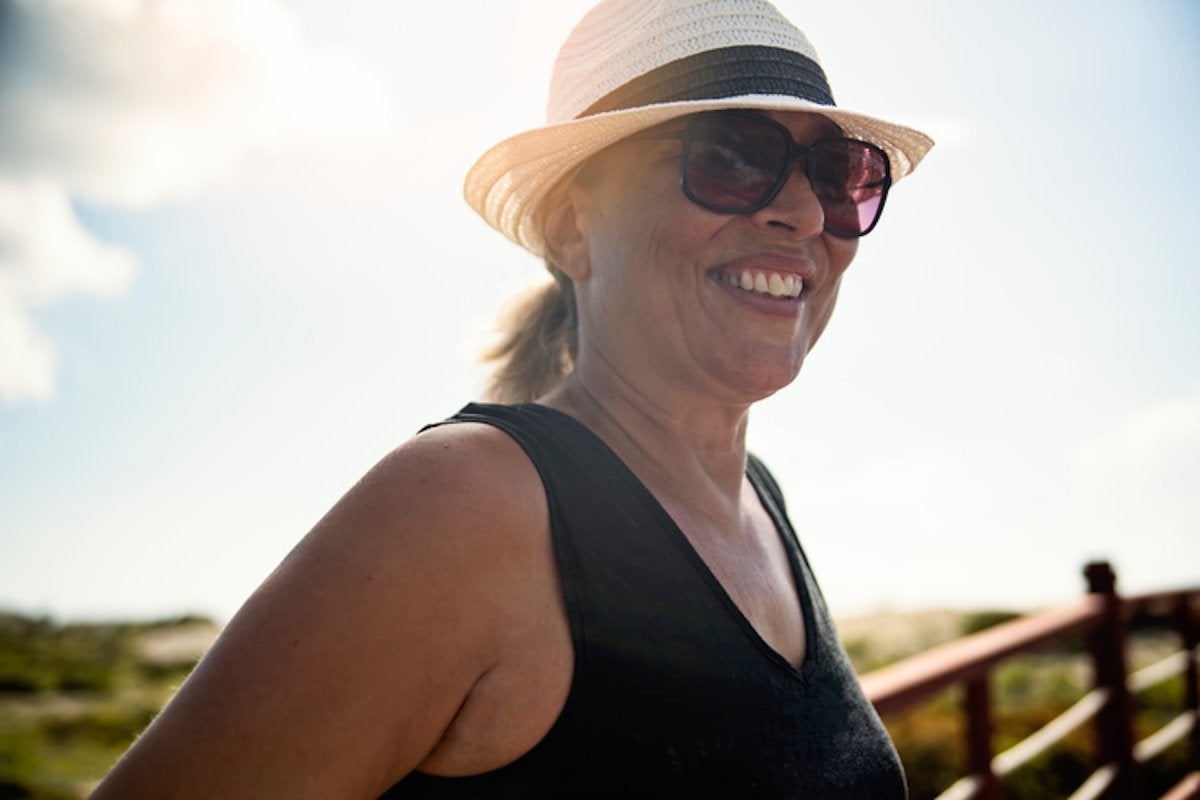How to protect your eyes and skin from the sun

The sun on your face can bring feelings of warmth, comfort and joy. Unfortunately, the sun is also a source of ultraviolet (UV) rays. These types of rays can be harmful to both your skin and your eyes.
There are two types of UV rays: UVA and UVB. Both are harmful to your skin.
UVA rays can cause indirect damage to cells’ DNA. They are linked to long-term wear like wrinkles and sunspots. They also may play a role in some skin cancers.
UVB rays are the main rays that cause sunburn. They are thought to cause most skin cancers.
Too much exposure to UV rays can also hurt your eyes. It can increase your risk of eye cancers and cataracts, for example.
Of course, it’s not possible to avoid the sun completely—nor would you want to! But there are ways to enjoy those warm rays and limit your risks.
Make sunscreen a habit: It’s important to wear sunscreen, even on cloudy days. Up to 80% of the sun’s UV rays can still penetrate through clouds. Wear sunscreen on any skin that is exposed, apply at least 10-30 minutes before you go outside, and aim for a broad-spectrum, water-resistant sunscreen with an SPF of 30 or more.
Sport some sunglasses: A good pair of shades are important to protect your eyes and the skin around them. Look for sunglasses that say, “Meets ANSI UV Requirements” or “UV absorption up to 400 nm.” This means they block 99-100% of UV rays.
Wear a broad-brimmed hat: Look for one with a brim of at least 3 inches all around. This offers protection to your face and also places you are more likely to miss when applying sunscreen, like the ears and back of the neck. A tightly woven hat will protect against more UV rays than a loose straw hat.
Cover up: Clothing can be your best bet for sun protection. Thicker materials in darker colors provide more protection than lightly colored, sheer materials. You can check how protective an article of clothing is by holding it up to the sun. If light can easily pass through, then it’s not going to offer great protection.
Avoid midday sun: The sun’s rays are strongest between 10 AM and 4 PM. Planning your outdoor activities outside of these hours, when possible, can help you stay protected.
Avert your eyes: Looking directly at the sun for even a short time can cause UV damage to your eyes’ retinas. It can lead to a serious injury called solar retinopathy.
Stay in the shade: If you’re outside for a while, seek some protection from an umbrella or tree. It won’t protect you entirely from UV rays but can work in tandem with the above strategies to help you stay safe.
Was this article helpful?
Sign up to unlock your health, your way at no cost to you.
This content is not intended to be a substitute for professional medical advice, diagnosis or treatment. Always seek the advice of your physician or other qualified health provider with any questions you may have regarding a medical condition.
